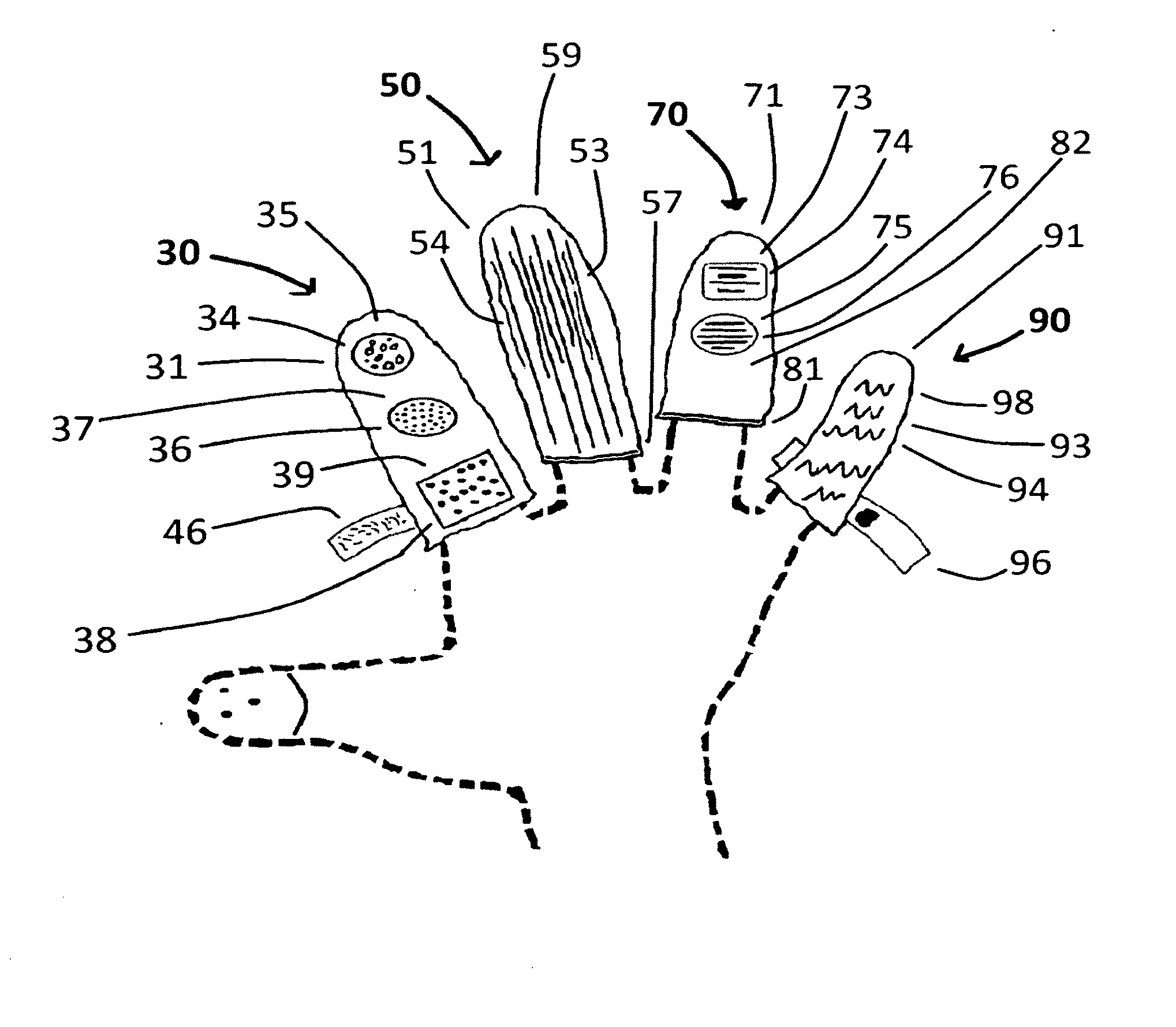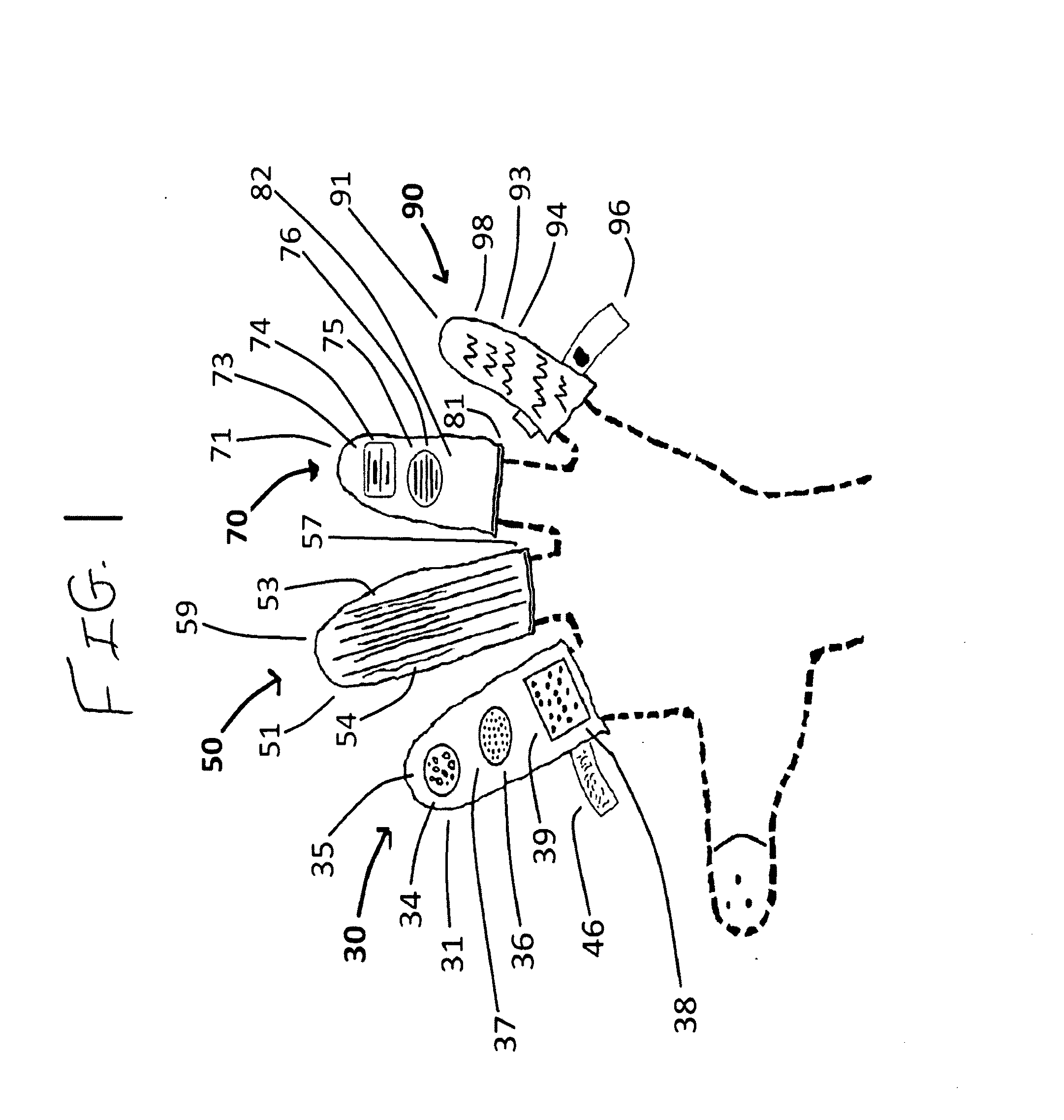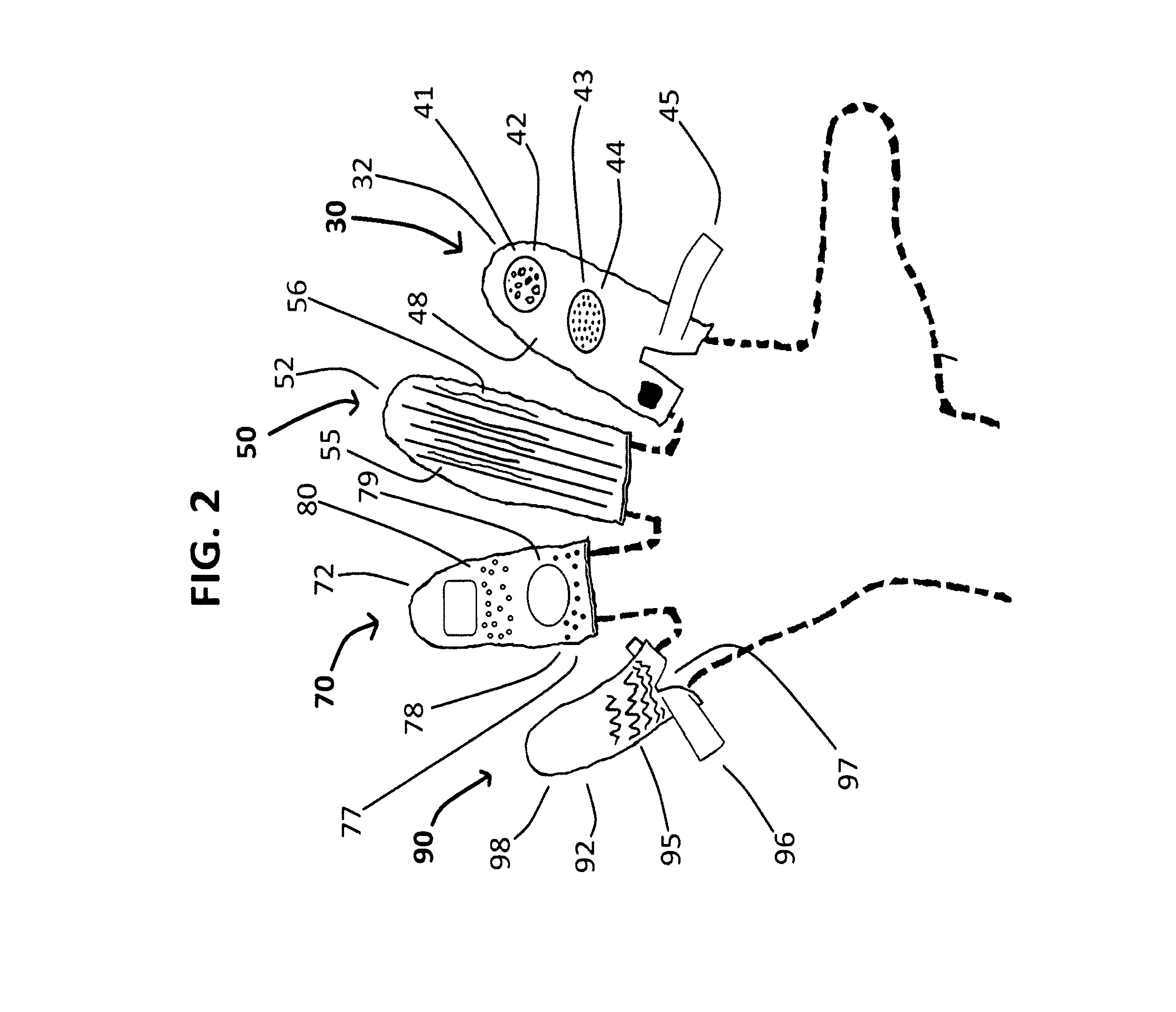Finger Cots and Sports Sleeves
a technology of finger cots and wrist sleeves, which is applied in the field of finger cots and sports sleeves, can solve the problems of inability to increase the grip of the forearm area or the wrist, inconvenient and easy to change, and inability to control and cradle the ball in an inherently unstable and uneven way
- Summary
- Abstract
- Description
- Claims
- Application Information
AI Technical Summary
Benefits of technology
Problems solved by technology
Method used
Image
Examples
embodiment 110
[0248]FIG. 5 illustrates how finger cot embodiments, including the embodiment described in 90, will find use and success in the sport of Golf. Shown for example, is another finger cot embodiment 110, and is adapted to overlay a user's entire distal phalanx and middle phalanx, and at least seventy percent of the proximal phalanx.
[0249]This finger cot embodiment has a first end and a second end, the first end is closed and the second end is open and adapted to allow enclose a substantial portion of a user's digital segment, such as a pinkie finger. The palmar and dorsal portions are essentially the same size.
[0250]The finger cot embodiment may be constructed any materials aforementioned, such as a polyurethane mesh combination 110 for added flexibility and maneuverability. It offers a grip enhancing means, such as, for example, of projections for added grip support in controlling a ball or object. Specifically, a grip enhancing means in the form of bead projections 112 overlaying a us...
embodiment 130
[0258]FIG. 6 of the present invention shows another finger cot embodiment 130 similar to those illustrated in FIG. 1.
[0259]This finger cot embodiment has a first end 131 and a second end 132, the first end is closed and the second end is open and adapted to enclose at least a substantial portion of a user's digital segment. More specifically, this embodiment is adapted to overlay a user's entire distal middle phalanges and at least seventy percent of the proximal phalanx130, of say a thumb digital segment, for example.
[0260]The dorsal portion 134 of this embodiment may be constructed of the same material as the material forming the palmar portion, such as synthetic leather135, or may be comprised of different material, depending on user preferences and other considerations aforementioned. For example, this finger cot embodiment is formed substantially of one material and molded generally of one material, thus no need to affix a palmar portion with a dorsal portion.
[0261]This embodim...
embodiment 190
[0293]A moisture absorbent material 190 may be provided along the dorsal portion of the finger cot, allowing a user to wipe off perspiration commonly on a user's face during active sports play. The moisture absorbent material may be secured anywhere along the dorsal surface or on the securement opening means, such as affixed to the dorsal surface area overlaying a user's distal phalanx. The moisture absorbent material may be formed of any moisture absorbent material aforementioned, such as, for example, about 1 / 12 inch terry cloth stitched onto the dorsal surface of the embodiment 190.
[0294]Additionally, embodiments such as this may be coated with a moisture repellant substance 191, such as a synthetic resin, for example, especially useful during harsher game day situations. The moisture repellant is applied to the entire embodiment.
[0295]This embodiment further provides a first shock-absorbing member along substantially all of the dorsal surface overlaying the user's distal phalanx...
PUM
 Login to View More
Login to View More Abstract
Description
Claims
Application Information
 Login to View More
Login to View More - R&D
- Intellectual Property
- Life Sciences
- Materials
- Tech Scout
- Unparalleled Data Quality
- Higher Quality Content
- 60% Fewer Hallucinations
Browse by: Latest US Patents, China's latest patents, Technical Efficacy Thesaurus, Application Domain, Technology Topic, Popular Technical Reports.
© 2025 PatSnap. All rights reserved.Legal|Privacy policy|Modern Slavery Act Transparency Statement|Sitemap|About US| Contact US: help@patsnap.com



